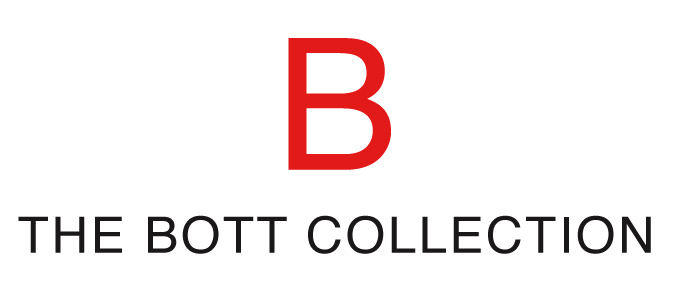In September, I sat down with artist Vanessa Marsh to discuss a body of work that she’s been working on for 11 years, called Everywhere All at Once.
Everywhere All At Once: Landscape #5, 2012 Archival Pigment Print 20 x 20”
Vanessa Marsh, 2019
Q: What was the genesis of this series?
Vanessa Marsh: The body of work before this was called Constellation. That began one day when I was teaching an alternative photography class. I’d been working in grad school using model train figures and taking them out into the landscape and photographing them. So I was already creating imagined spaces that appeared real in one way or another.
I was just giving a demonstration to students. I took these little figures into the darkroom to make some photograms and ended up throwing together a little landscape.
Q: What do you mean by “throwing together a landscape”?
Landscape #7, 2011
Marsh: I didn’t have a plan. I created layers of mountains with torn paper and put figurines on top and made an exposure. Then I took the figurines away and made another exposure. That ended up creating a depth of field within this photogram. I had some idea of what it would look like. But it was a eureka moment when I put it in the developer and saw the image come out. I looked at my students and said, “Don’t do what I just did.” [Laughs] “This is mine. Nobody else do that!”
Constellation came out of that. The images became more refined, with more intention to the narrative I was creating with each one. I gave an artist’s talk about that body of work, and one of the people in the audience pointed out that each image had a very similar perspective. They all had a dark area at the bottom. I realized I wasn’t challenging myself compositionally. So I came back to my studio with the intention of playing around with different perspectives, less rooted to the foreground.
Everywhere All At Once: Landscape #29, 2015 Archival Pigment Print 20 x 20”
Landscape 7 was one of the first ones that I did, with the idea that instead of looking out at the landscape, you would be looking up through something that’s in the landscape. You’re seeing flags above you and the sky beyond that.
Q: I’m curious about the title you gave the series, Everywhere All at Once. Where did that come from conceptually, and did it inform some of the images that you made?
Marsh: I was taking pieces of different places and creating a new place out of them. So for example, I’d find a palm tree down the road, take a reference shot of it, put that in front of a silhouette of Mount Rainier, and create a new place.
The title also references the process: I’m using old photographic techniques and more contemporary ones as well, combining different ways of working from different eras.
Everywhere All At Once: Landscape #9, 2012 Archival Pigment Print 20 x 20”
Q: In a lot of your work, you reference technology, like the satellite dish or the telephone poles. What draws you to those?
Marsh: They’re elements that we edit out when we look at the landscape, but they’re omnipresent. Even in the middle of nowhere, Wyoming, you’ll see a telephone pole, a powerline. These pieces of infrastructure connect us all and cut across almost every landscape that we inhabit, in one way or another.
Everywhere All At Once: Landscape #38, 2018 Archival Pigment Print 20 x 20”
Q: What’s your process for making these images?
Marsh: I start by taking reference images on my phone. If the location isn’t accessible to me, I’ll search for an image online. Then I break down the idea I have in my head into layers and make a drawing for each layer on clear acetate. I take those drawings into the darkroom and lay them out on photographic paper and make a series of exposures as I remove drawings.
Everywhere All At Once: Landscape #36, 2017 Archival Pigment Print 20 x 20”
I do a combination of tracing and freehand drawing. The palm trees will often be freehand. When it’s something like a rollercoaster, to get that perspective right, I usually trace that to a large degree. Faraway powerlines I can draw freehand, but when it gets really intricate—wires crossing and things like that—I tend to trace.
Q: After you make the exposures, what happens?
Everywhere All At Once: Landscape #28, 2015 Archival Pigment Print 20 x 20”
Marsh: I end up with a negative of the image. I scan the negative, invert the image in Photoshop, and print it as a pigment print on archival cotton rag paper.
Q: Do you see yourself continuing your work on Everywhere All at Once?
Marsh: Yes. I initially had a plan of stopping when I hit 50 of them. I’m still in the 30s. But I don’t know if I’ll stop. If I still see things in my life that I want to draw and turn into this format, then I’ll keep doing it. I have moved on to other bodies of work, and I enjoy finding new ways of working in other areas. But I always seem to come back to this.
For a complete list of available prints with price information please contact The Bott Collection.
Everywhere All At Once: Landscape #23, 2014 Archival Pigment Print 20 x 20”









